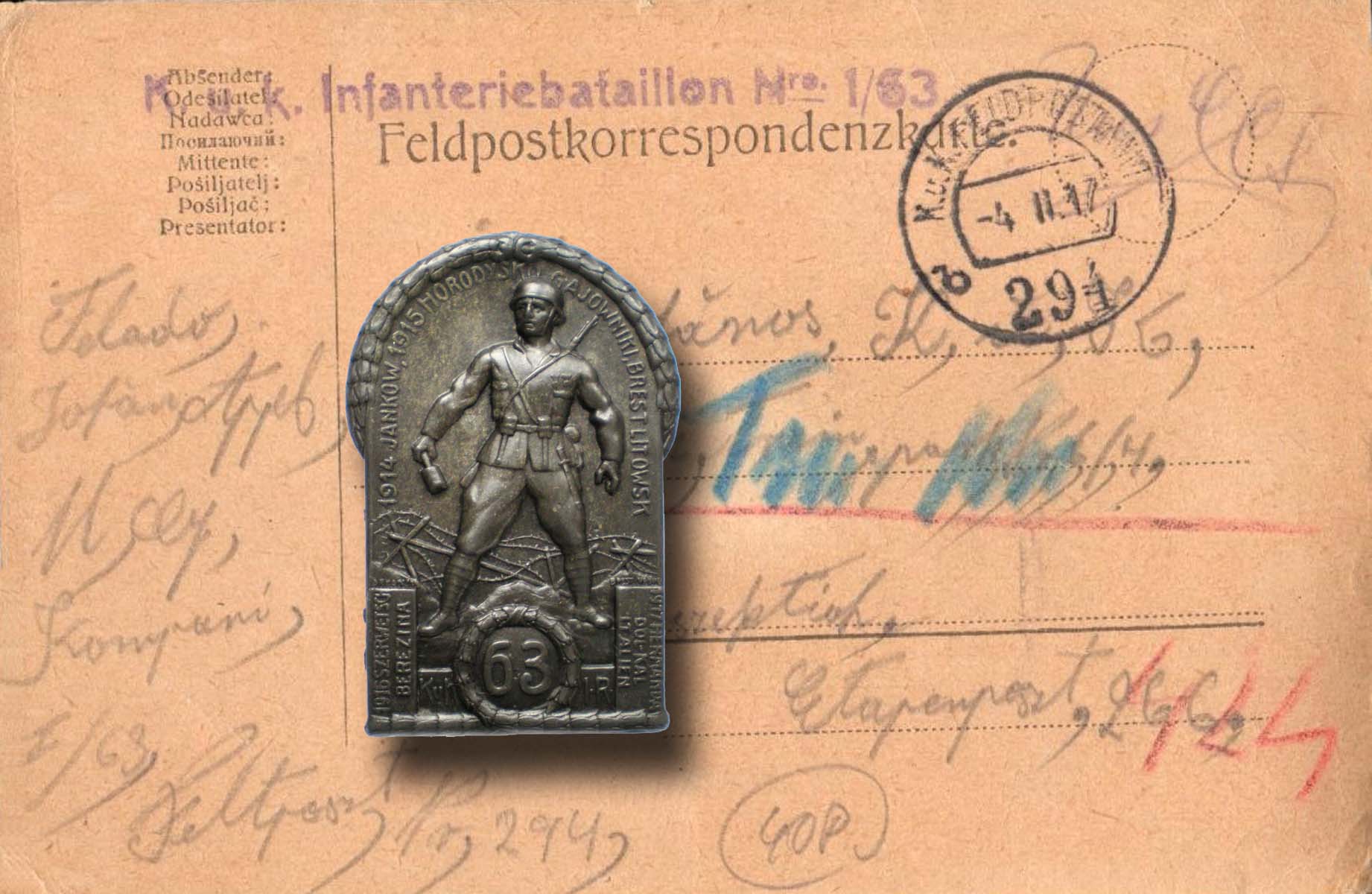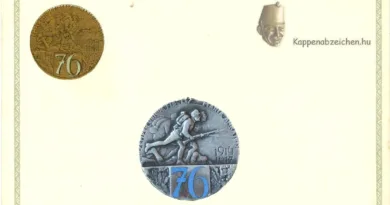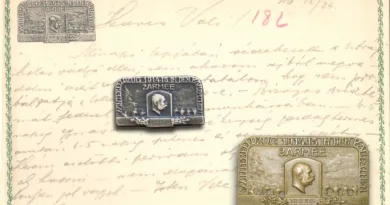IR 63
The 63rd Infantry Regiment had its recruiting area in north-eastern Transylvania, primarily in the county of Beszterce-Naszód. The crew reflected the population distribution of the area and consisted up to three quarters of soldiers Romanian nationality. It was a regiment of the 35th Division of Transylvania. The 35th Division’s Kappenabzeichen has the same battle sites then the 63ers. They fought on the Russian front from 1914 to 1916 more in the northern sector. They often conducted therefore joint operations with German troops located further to the north of them. For example, they were involved in the capture of Russian Poland, as the name Brest-Litowsk shows. In 1917, they were transferred to the Italian front, the Carst Plateau, where they defended the southern part of the front section. For example, the inscription Hermada on the badge reflects the particularly bloody 10th Isonzo battle in which the regiment defended with heavy losses the Hermada high ground near the Adriatic coast. In the summer of 1918, at the request of Germany, perhaps due to the frequent German cooperation, the 35th Division was chosen to be transferred to France. The badge does not indicate this, but the regiment’s plaque also reads the battle sites in France for 1918.

It was therefore a reliable and proven regiment, which was certainly expected to stand even in the most difficult situations. The regimental badge depicts an assault troop soldier in front of barbed wire obstacles. The badge mentions the 12th Isonzo battle. It refers to the gathering point of the troops for the victorious Caporetto breakthrough (Dol Kal). So it is believed to have been made in 1918. The badge motif was also used to make a letter-closing. The field post card used as the background shows an imprint of one of the unit’s stamps.






